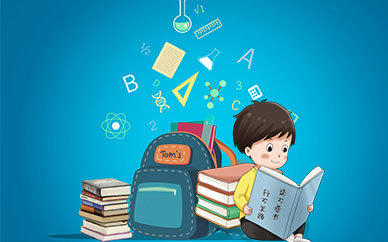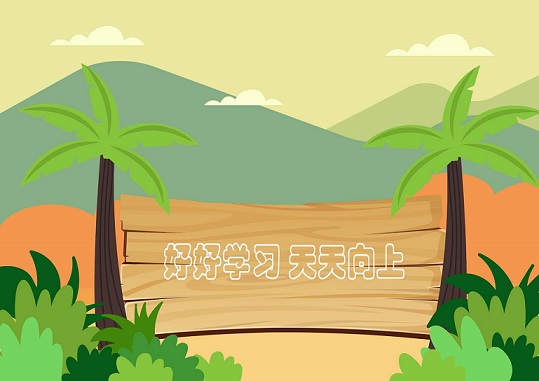We prepare our studentsto be
WORLD READY.
 (資料圖片)
(資料圖片)
Slide right for English
*本文是雙語(yǔ)文章 左右滑動(dòng)文字可以切換中英文
EYFS課程體系(全稱(chēng)為Early Years Foundation Stage)是世界上最具權(quán)威的嬰幼兒早期教育標(biāo)準(zhǔn)之一,同時(shí)它也是英國(guó)有史以來(lái)規(guī)模最大的早期教育跟蹤和效果評(píng)估項(xiàng)目之一。
作為一套針對(duì)0-5歲的幼兒連續(xù)發(fā)展和學(xué)習(xí)的早期課程體系,EYFS課程體系一直都是世界范圍內(nèi)尤其是英國(guó)本土的知名公立及貴族私立幼兒園的首選。
EYFS課程體系同時(shí)也是英國(guó)教育部歷時(shí)12年、耗資超過(guò)1500萬(wàn)鎊、超過(guò)7000名專(zhuān)家、學(xué)者和教師精細(xì)合作打造的結(jié)晶。它在英國(guó)被譽(yù)為“父母最好的選擇、幼兒最好的開(kāi)始”;它更是以注重兒童個(gè)性化發(fā)展作為核心理念,并不遺余力地幫助幼兒追求一段有“生命質(zhì)感”的教育。
01
走進(jìn)EYFS課程體系
EYFS課程體系包涵七大領(lǐng)域的學(xué)習(xí),而在課程的理念上,也以蒙氏教育為基礎(chǔ),融合其他教育理論,遵守四個(gè)原則。
七大學(xué)習(xí)領(lǐng)域
Seven areas of learning
四個(gè)原則
Four principles
EYFS課程體系與IB PYP課程體系在理念方面也有著許多共同之處,例如兩者都強(qiáng)調(diào)玩中學(xué)。同時(shí)兩者都是一個(gè)包容性強(qiáng)的體系:EYFS課程體系同時(shí)承載了蒙氏、華德福、瑞吉?dú)W等體系精髓,而IB PYP課程體系作為一整套全面的教學(xué)框架能與不同國(guó)家的課程體系相融合。
那么,這兩大課程體系又各有哪些優(yōu)勢(shì)值得整合采用呢?
首先,EYFS課程體系主要針對(duì)0-5歲兒童,而IB PYP課程體系則能覆蓋3-12歲兒童,以及后續(xù)針對(duì)12-18歲的IB MYP及IB DP課程體系。學(xué)生可以在IB體系的框架下螺旋上升地不斷學(xué)習(xí)與探索,支持學(xué)生可持續(xù)發(fā)展地成長(zhǎng)。
而EYFS課程體系,以當(dāng)今世界上20多種先進(jìn)的早期教育理論、研究和實(shí)踐作為基礎(chǔ),對(duì)低齡段嬰幼兒而言是一套全方位支持與照護(hù)的啟蒙體系。
因此中山市阿丁萊幼兒園在課程構(gòu)建之初,便屬意將EYFS課程體系及IB PYP體系相融合,各取其優(yōu)勢(shì)及核心。
02
全面貫穿,
EYFS持續(xù)賦能
EYFS課程體系著重關(guān)注孩子們?cè)谄叽箢I(lǐng)域的發(fā)展,因此針對(duì)每一位即將入讀的學(xué)生,主班老師都會(huì)通過(guò)家庭面談就孩子的不同方面提前溝通了解。其主要目的在于了解幼兒生長(zhǎng)發(fā)育的現(xiàn)狀、其在七大領(lǐng)域方面的基礎(chǔ)情況、所處的家庭環(huán)境以及此前所接受過(guò)的教育項(xiàng)目。
在溝通、語(yǔ)言和文字、身體發(fā)展領(lǐng)域,中外教師們會(huì)利用有趣而富有挑戰(zhàn)性的游戲加入到課堂當(dāng)中。
例如短暫的藝術(shù)(Transient Arts),老師利用相框或者相框紙,再搭配低結(jié)構(gòu)材料(自由零件)、自然材料,鼓勵(lì)學(xué)生自由發(fā)揮并體現(xiàn)各自的想象力與創(chuàng)造力;
又例如圓圈時(shí)間(Circle Time),以小組形式圍坐在地毯上,開(kāi)展一次內(nèi)容豐富并以互相尊重為前提的互動(dòng)交流:可以是歌曲、童謠和律動(dòng)的鑒賞、繪本故事分享,又或是針對(duì)當(dāng)天趣聞的交談,在一個(gè)輕松愉悅的氛圍中,幼兒可以最大限度地集中注意力,學(xué)習(xí)新的知識(shí)與規(guī)則。
在個(gè)人、社會(huì)和情感發(fā)展領(lǐng)域,中外教師也將遵循EYFS課程體系的滲入。
例如在個(gè)人領(lǐng)域發(fā)展中,老師們會(huì)通過(guò)鼓勵(lì)孩子們自己穿衣服、鞋子等方式給予他們更多的“試錯(cuò)機(jī)會(huì)”,這就逐漸培養(yǎng)了孩子們的獨(dú)立能力、自信與自我意識(shí);
而在社會(huì)領(lǐng)域,老師們打造的輕松和諧的課堂氛圍就成為了孩子們建立人際關(guān)系的“墊腳石”,他們可以通過(guò)一次次的團(tuán)隊(duì)游戲又或是自由交談時(shí)間來(lái)拉近同齡人之間的距離;
在情感發(fā)展方面,從新生入園時(shí)面對(duì)分離焦慮,老師們便給予他們無(wú)微不至的關(guān)愛(ài),通過(guò)安撫、模仿、鼓勵(lì)等正面管教方式,來(lái)支持幼兒完成情緒表達(dá),并與他們建立一種安全感的鏈接。
03
多元評(píng)估,
EFYS階段指導(dǎo)
EYFS課程體系要求早期教育工作者以觀察性評(píng)價(jià)和過(guò)程性評(píng)價(jià)的方式,分別在2歲和5歲的年齡階段對(duì)嬰幼兒的學(xué)習(xí)成果進(jìn)行全面總結(jié)。
兩歲進(jìn)步檢查
在幼兒2-3歲之間,老師需要對(duì)幼兒在基礎(chǔ)領(lǐng)域中的發(fā)展情況進(jìn)行書(shū)面概述,指出兒童發(fā)展良好的領(lǐng)域以及可能需要額外支持的領(lǐng)域。而針對(duì)個(gè)別可能存在發(fā)展遲緩的領(lǐng)域,老師還需要描述未來(lái)計(jì)劃采用的應(yīng)對(duì)活動(dòng)與策略。
五歲檔案袋評(píng)價(jià)
在幼兒年滿(mǎn)五歲的最后一個(gè)學(xué)期,老師們還會(huì)將幼兒的每個(gè)發(fā)展水平對(duì)應(yīng)早期學(xué)習(xí)目標(biāo)進(jìn)行一次全面的綜合評(píng)價(jià),并對(duì)兒童的有效學(xué)習(xí)特征進(jìn)行說(shuō)明。
除此之外,中山市阿丁萊幼兒園還在其基礎(chǔ)上優(yōu)化了其評(píng)價(jià)方式。定期舉辦的三方會(huì)談就是評(píng)估的一種方式,教師、學(xué)生、家長(zhǎng)進(jìn)行一次共同探討,總結(jié)當(dāng)前學(xué)習(xí)狀況并制定下階段的發(fā)展目標(biāo)。
在七大領(lǐng)域的評(píng)估中,我們更是糅合了具體學(xué)科的評(píng)估信息。教師可以通過(guò)相關(guān)的游戲任務(wù),以觀察、記錄、評(píng)估細(xì)則表等不同方式來(lái)衡量孩子的成長(zhǎng)和進(jìn)步。同時(shí)新增的單元總結(jié)評(píng)估,是在每個(gè)探究單元結(jié)束后開(kāi)展一次主題評(píng)估,教師通過(guò)總結(jié)多學(xué)科融合、與學(xué)生學(xué)習(xí)和生活息息相關(guān)的挑戰(zhàn)性任務(wù),從而獲得更有意義的反饋信息。
諾貝爾物理學(xué)獎(jiǎng)得主卡皮察曾說(shuō):“一生中最重要的東西都是在幼兒園學(xué)到的!”0-5歲是幼兒一生中密集汲取知識(shí)、快速掌握技能的時(shí)光,作為完全覆蓋這一階段的EYFS課程體系,其教育理念以及對(duì)教學(xué)實(shí)踐的指導(dǎo),無(wú)疑會(huì)對(duì)孩子們的人生產(chǎn)生極為深遠(yuǎn)的影響。
在中山市阿丁萊幼兒園,EYFS課程體系也是繼IB PYP課程體系及中國(guó)兒童學(xué)習(xí)與發(fā)展指南后的又一教學(xué)支柱。趣味性強(qiáng)而富有挑戰(zhàn)性的游戲豐富了幼兒的活動(dòng),多元、相互關(guān)聯(lián)的模塊更是在重視幼兒興趣發(fā)展的同時(shí),幫助他們?cè)谌松缙诘於ǜ哔|(zhì)量的成長(zhǎng)基礎(chǔ)!
EYFS (Early Years Foundation Stage) is one of the world"s most authoritative early years standards and one of the largest early years tracking and impact assessment programmes ever undertaken in the UK.
As a continuum of development and learning for children aged 0-5 years, the EYFS curriculum has been the first choice of all the world"s leading public and private nurseries, especially in the UK.
The EYFS is the culmination of 12 years, over £15 million and 7,000 experts, academics and teachers working in partnership with the UK Department for Education. It has been described by the UK government as "the best choice for parents and the best start for young children", and it has a strong focus on the individual development of the child, with no effort spared to help young children pursue a "life-affirming" education.
01
Learn About EYFS
The EYFS encompasses the seven areas of learning and the philosophy of the curriculum is based on Montessori education, incorporating other educational theories and adhering to four principles.
七大學(xué)習(xí)領(lǐng)域
Seven areas of learning
四個(gè)原則
Four principles
The EYFS and the IB PYP also have a lot in common;for example, they both emphasise learning through play, andthey are both inclusive systems (the EYFS carries the essence of the Montessori, Waldorf and Reggio systems, while the IB is compatible with the Chinese National Developmental Guidelines for 3-6 year-olds and other national curriculum standards).
So, what are the advantages of each of these two curriculum systems that are worth integrating and adopting?
Firstly, the EYFS curriculum is aimed at children aged 0-5 years, while the IB PYP curriculum covers children aged 3-12 years and the subsequent IB MYP and IB DP curriculums for 12-18 years. Students can learn and explore in a spiral within the framework of the IB system, supporting their sustainable development.
The EYFS curriculum, based on more than 20 of the world"s most advanced early education theories, research and practices, is a holistic system of support and care for infants and toddlers at an early age.
Therefore, from the very beginning of the curriculum development, we intended to integrate the EYFS and the IB PYP, taking the advantages and core of each.
02
EYFS at Our
Kindergarten
EYFS focuses on the seven domains of children"s development; therefore,we conduct highly targeted early childhood and parent interviews well in advance of the children"s enrolment. The main aim is to understand the child"s current development, their foundations in the seven domains, their home environment,and the educational programme they are currently following.
In the areas of communication, language and literacy, and physical development, Chinese and foreign teachers use enjoyable and challenging games as part of their classes.
For example, Transient arts is a game that uses frames or framed paper with low-structure materials (free parts) and natural materials to bring out the imagination and creativity of children;
Circle time, for example, is a time for groups of people to sit around a carpet and have a rich and respectful interaction: it could be an appreciation of songs, rhymes, rhythms, sharing a picture book story, or talking about current anecdotes in a relaxed atmosphere where children can maximise their attention span and learn new skills and rules.
The infusion of EYFS is also completed by Chinese and international teachers in the areas of personal, social,and emotional development.
For example, in the personal development area, the teachers give the children more "trial and error" opportunities by encouraging them to put on their own clothes and shoes, which gradually develops their independence, self-confidence,and self-awareness.
While in the social area, the relaxed and harmonious atmosphere created by the teachers becomes a "steppingstone" for the children to build interpersonal relationships.
In the emotional development area, to addressseparation anxiety at the beginning of the school year, the teachers begin to provide the children with the utmost care, supporting them in their emotional expression through positive discipline such as reassurance, imitation, and encouragementto establish a link with them that provides a sense of security and attachment.
03
Evaluation Systems
EYFS requires early educators to provide a comprehensive summary of infants" and toddlers" learning outcomes at 2 and 5 years of age using observational and process assessments respectively.
Two-year-oldprogress check
Between the ages of 2 and 3, teachers are required to provide a written overview of the child"s development in the foundation areas. Evaluationfocuses on areas where the child is developing well, and others where additional support may be needed. In particular, the process highlightsareas where children may be showing signs of developmental delay and describesthe intended coping activities and strategies to be used.
Evaluation of the Five-Year-Old Profile Pack
In the final term,when the child reaches the age of five, the teachers also carry out a comprehensive and integrated evaluation of each level of development corresponding to the early learning goals and a description of the child"s effective learning characteristics.
In addition to this, Ardingly College Zhongshan(Kindergarten) has built strongfoundationon whichto optimise its assessment methods. The three-way-conference isa way of assessingprogress; parents, students and teachers have a joint discussion to take stock of the current state of learning and set goals for the next stage of development.
Within the seven areas of assessment, we have blended subject-specific assessment information. Teachers can measure children"s growth and progress in a variety of ways including observation, record keeping,and assessment detail sheets through relevant play tasks. Also new is the Unit Summary Assessment, a thematic assessment at the end of each unit of enquiry, which allows teachers to gain more meaningful feedback by summarising challenging tasks that are multidisciplinary and relevant to students" learning and lives.
Nobel Prize winner in physics, Kapitza once said, "The most important things in life are learned in kindergarten!" The EYFS, which completely covers this period, has a philosophy of education and guidance on teaching practices that will undoubtedly have a profound impact on children"s lives.
At Ardingly College Zhongshan(Kindergarten), the EYFS is also a pillar of teaching and learning following the IB PYP and the Chinese Children"s Guide to Learning and Development. Fun and challenging games enrich the children"s activities, and the diverse and interconnected modules help them to build a quality foundation for growth in the early years of their lives, while emphasising the development of their interests!
關(guān)鍵詞:




















 營(yíng)業(yè)執(zhí)照公示信息
營(yíng)業(yè)執(zhí)照公示信息